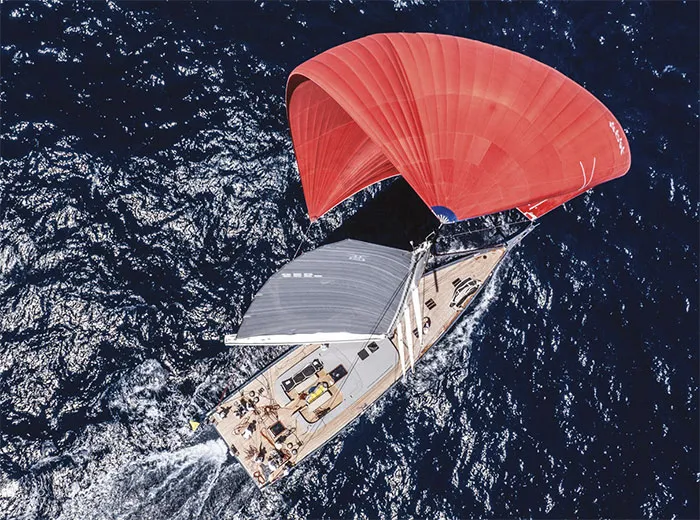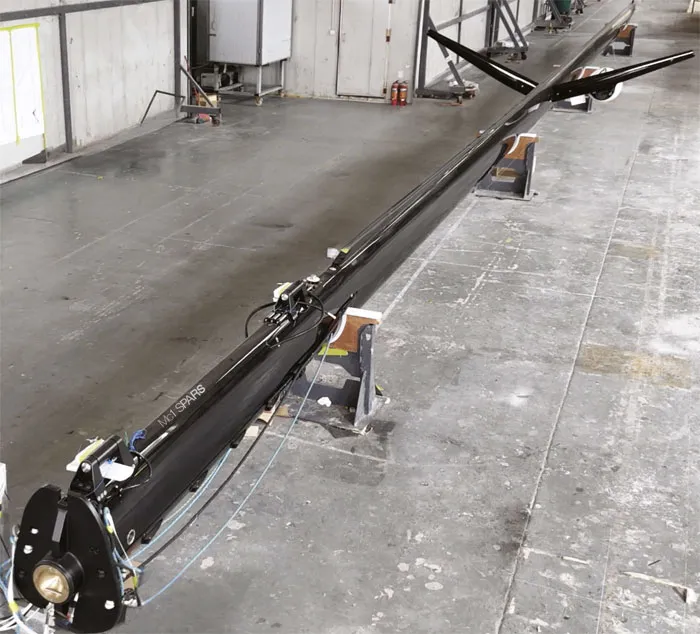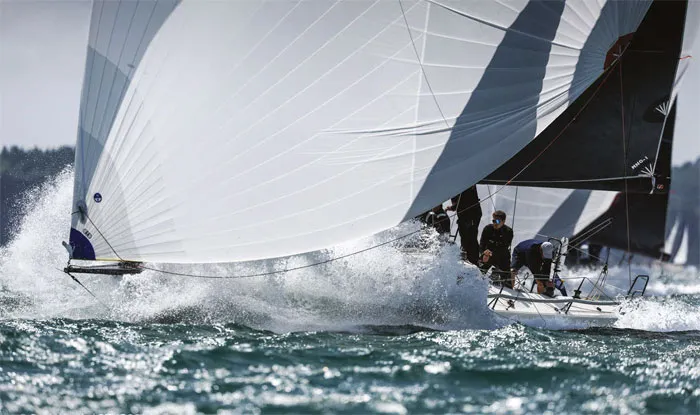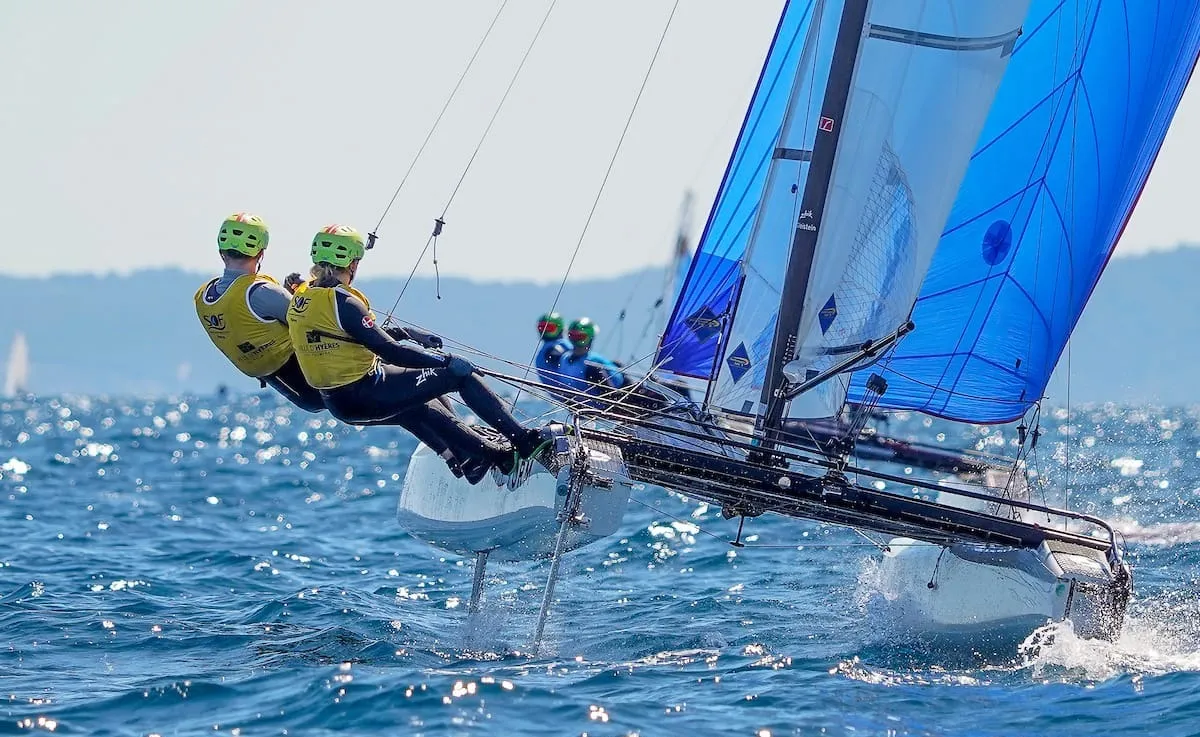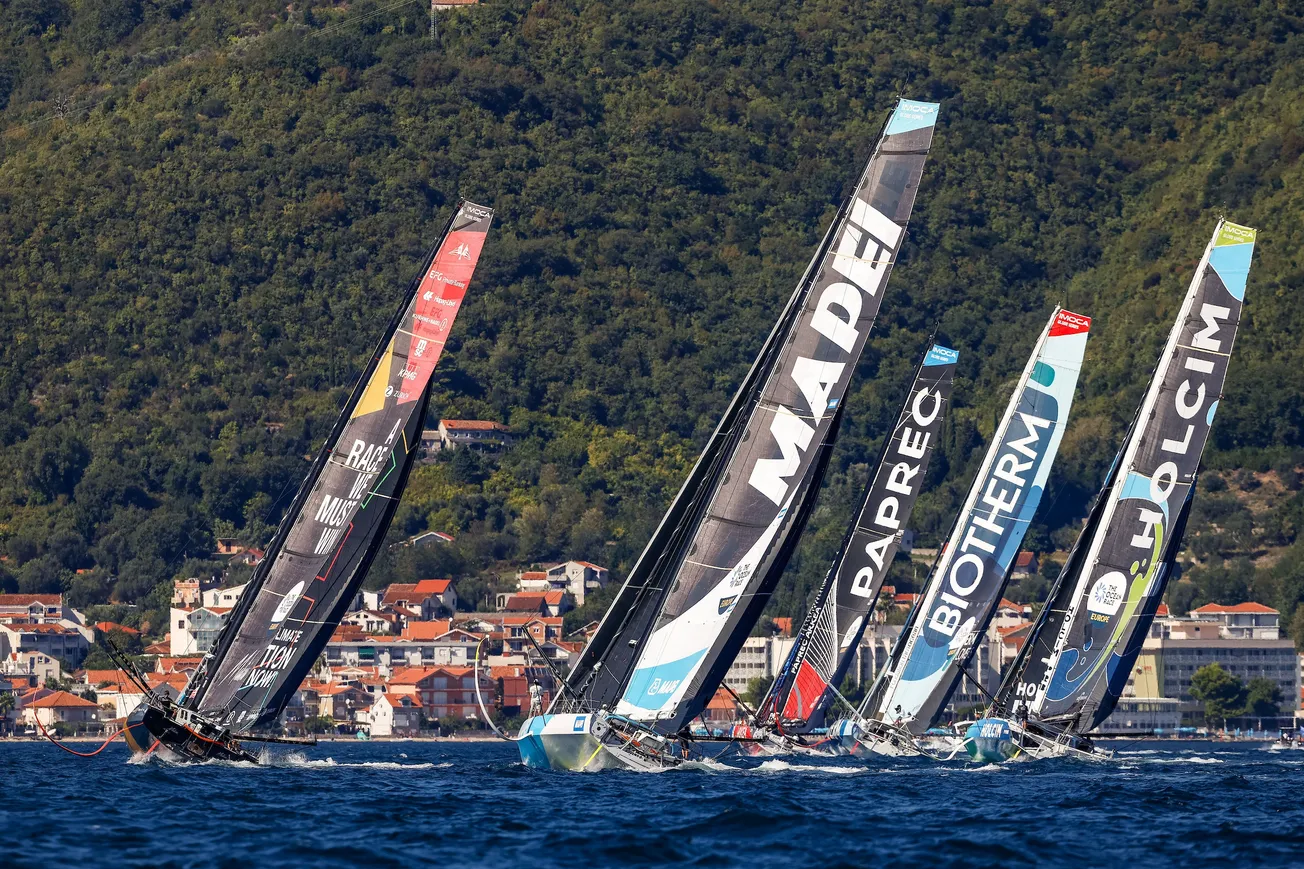
Modern yachts are becoming increasingly optimised, customised, lighter, and faster. The use of carbon fibre is expanding, with fabrics now oriented according to load paths rather than being applied isotropically. In this evolving landscape, structural yacht design has undergone a significant transformation.

Until a few years ago, it was sufficient to follow classification society regulations, with finite element analysis (FEM/FEA) applied only in specific cases. Today, however, FEA has become essential for the structural design of any yacht large or small, sailing or motorised.
Classification societies have taken note of this shift and have updated their standards accordingly. Traditionally, yachts have been designed and built based on empirical rules. Previous regulations did not specify design loads explicitly; instead, they provided guidelines where parameters such as displacement, yacht length, and panel geometry determined the required scantlings for panels and structures. Today, the approach has changed entirely. Classification societies now actively endorse and approve the use of FEA, and their updated regulations explicitly define the loads to be applied in finite element models.

In the following sections of this article we explore how modern structural design is conducted, including a case study of a yacht from a leading yard such as YYachts.
Structural Calculation: Beyond Empirical Formulas
Structural calculations can no longer rely on simplified empirical formulae, scaled versions of previous designs, or mere compliance with regulatory standards.
With the introduction of updated ISO standards for keels and masts, as well as the second edition of ISO 12215-5 (2019), the use of FEA has been officially recommended. These standards define the loads for complex components such as keel and mast structures while granting designers the freedom to conduct their own FEM (Finite Element Method)/FEA assessments. The era of empirical models and simplified formulas is over. Today, the focus is on accurately determining the applied loads, leaving
FEA to handle the analysis. However, it is crucial to remember that FEA is a validation tool, not a design tool. FEA provides highly accurate verification of stress and strain conditions in structures – provided the model is correctly set up but it does not inherently aid in the design process. Structural layouts must first be conceptualised based on experience and fast preliminary calculations, such as hand-calcs. Only after defining the yacht’s scantlings, structural layout, and panel arrangement can FEA validate the assumptions and refine the design.
How does FEA work?
FEM breaks down large, complex problems – such as verifying the structural layout of a yacht – into smaller, more manageable calculations. This is achieved by dividing the geometry into a computational mesh. The process segments the yacht into numerous small elements (finite elements), making it easier to calculate deformations under applied loads.
In essence, this methodology enables precise analysis of structural response to loads and constraints in any part of the yacht, providing data on stress, strain, natural vibration frequencies, and other key material properties. This allows designers to refine and optimise structural components to achieve the required strength and stiffness.
At AMS, this methodology is seamlessly integrated into our design workflow, ensuring structural efficiency and safety before production even begins.
The AMS workflow: how FEAbased design is structured
At AMS, we verify all the yachts we design using FEA. Our typical workflow follows this structured process:
Preliminary Structural Sizing
We begin with an initial structural definition, determining the hull structure’s geometry based on regulations, shipyard requirements, and our experience. This phase relies on hand-calcs and expertise. If executed correctly, the subsequent FEA validation will be swift. Otherwise, adjustments to the FE model’s mesh will be required – an extremely timeconsuming task
Issuing Hull Lamination Drawings
At this stage, the lamination drawings for the hull are usually issued (excluding localised reinforcements, which are added later), allowing the shipyard to begin work in advance, since the FEA results will primarily influence the internal structures and deck, leaving the hull mostly unchanged except for some local reinforcements.
3D Modelling and FE Model Development
Once the hull and deck structures are modelled in 3D, we develop the FE model for the entire yacht.
A typical FE model consists of around 500,000 nodes and 400,000 elements, ensuring that every area, reinforcement, and detail is accurately represented.
FEA Validation and Refinement
This preliminary structural sizing is then validated and refined using FEA to optimise structural efficiency. The yacht is analysed as initially designed.
- If everything is correctly dimensioned, the engineering phase is completed, and we move on to detailed drawings
- If adjustments are needed, material properties can be tuned within the FE model (a relatively quick process)
- If geometrical modifications are required—such as adjusting structural heights—mesh modifications are necessary, significantly increasing workload and time.

Timeframe for an 80ft Yacht
For the structural design of an 80ft yacht, preparing the FE model typically takes seven to 10 days, with the subsequent analysis requiring a similar timeframe.
The Standard FE Analyses Performed
At AMS, we conduct a series of standard FE analyses as part of the yacht design process. While the fundamental approach remains similar, some analyses differ between sailing and motor yachts, and additional assessments are performed for specific configurations.
1. Linear Static Analysis (for all yachts)
For every yacht, we carry out a linear static analysis with the FE model in a free-floating condition, meaning:
- The model is unconstrained, in equilibrium under the combined effects of hydrostatic pressure and applied loads (sail forces, keel, rudder, and rigging)
- In the same conditions, we conduct a buckling check on the deck structure to verify that it does not enter instability due to the compressive forces induced by hull bending
2. Deck Stiffness Analysis (for all yachts)
For both sailing and motor yachts, we perform a deck stiffness analysis to ensure that no areas feel excessively flexible or soft underfoot when walked on.
3. Specific Analyses For Sailing Yachts
- Hull structure under keel loads: We simulate the yacht heeling at 90°, analysing the structural response to the keel loads when the boat is knocked down by the wind or waves
- Grounding simulation: The keel impact scenario against the bottom of the sea is analysed to assess the structural behaviour in case of accidental grounding
4. Local Loads Verification (for all yachts)
For each yacht we analyse local loads, including:
- Sailing yachts: Shrouds, backstay, forestay, inner forestay, mainsheet, genoa sheet, Code 0 sheet, deck hardware, blocks, and cleats
- Motor yachts: Cleats and all other critical local load points
5. Modal Analysis (when required)
A modal analysis is performed, when needed, to check the stiffness of vibrationsensitive structures such as hardtops or other elements prone to oscillation.
This structured approach ensures that every yacht meets the highest standards of structural performance, reliability, and safety before production begins.
From Design to Manufacturing: An investment that Pays Off
After the validation phase, where structural elements are confirmed, we proceed with the production drawings. These documents provide a comprehensive blueprint of the entire manufacturing process, detailing:
- Material specifications, including mechanical properties
- Construction details
- Weight estimates
- Manufacturing methodologies
For each structural component, the laminate stack is meticulously defined. This includes:
- The types of reinforcing fabrics (fibreglass and/or carbon fibre)
- The stacking sequence and orientation of each ply within the composite
- The core material used in sandwich structures
Once the drawing phase is complete, a calculation report is compiled. This document includes:
- All FEA analyses performed
- Traditional structural verification methods required for classification society approvals
This rigorous design-to-manufacturing workflow ensures structural reliability, weight optimisation and production efficiency, delivering a final product that will meet both performance and safety standards.
Case Study: the 80ft Cruiser-Racer Y8 by YYachts
The advantages of FEA become particularly evident when tackling unconventional structural challenges.
Among AMS’s many successful projects, the 80ft cruiser-racer Y8 by YYachts stands out as a prime example of how advanced simulations can push the boundaries of yacht engineering.
Rethinking Structural Design for More Space and Customisation
The Yyachts shipyard, which is always focused on innovation and product improvement, aimed to create a spacious and comfortable open-space saloon inside the yacht.
To achieve this, they wanted to offer the final client an exceptionally high level of customisation, requiring AMS to replace the standard mast-supporting bulkhead layout with a less intrusive ring structure, while still maintaining sufficient structural inertia.
Validating an Unconventional Layout with FEA
The proposed solution had potential, but we needed to assess its strength and stiffness with extensive FE analysis. We meshed the geometry and ran the first simulations, revealing two critical issues:
- Initial ring thickness was insufficient to handle the expected loads
- The entire structure was too weak when subjected to grounding loads (accidental impact with the seabed)
To resolve these issues, we:
- 1. Increased the height of the secondary girders to reinforce the floor framing
- 2. Modified the mesh and re-ran all analyses to ensure the new configuration met structural requirements
This time, the results were positive across all validation criteria. The unconventional layout was successfully approved, demonstrating how FEA enables the development of innovative solutions that would be impossible to validate through traditional methods alone.

Conclusions
By integrating FEA into every stage of the design process, AMS enables shipyards and designers to push the boundaries of yacht engineering. Our dedication to structural innovation results in lighter, stronger, and more efficient yachts that meet the highest industry standards.
Whether optimising a racing yacht, enhancing the structural integrity of a luxury motor yacht, or pioneering new applications in composite materials, AMS remains at the forefront of high-end yacht engineering, delivering expertise that actively shapes the future of the industry.
In an increasingly competitive market, the ability to optimise design is no longer just a technical advantage. It’s a necessity to ensure the success of every new project.
Investing in FEA not only guarantees safety and performance but also provides high-value engineering solutions that can be tailored to customer expectations. This commitment to quality and continuous improvement ensures that yacht designs evolve to meet the growing demands of a rapidly advancing industry.
Get all areas access to Yacht Racing Life with a Full Membership free 30-day trial. There's no obligation and you can cancel at anytime.


